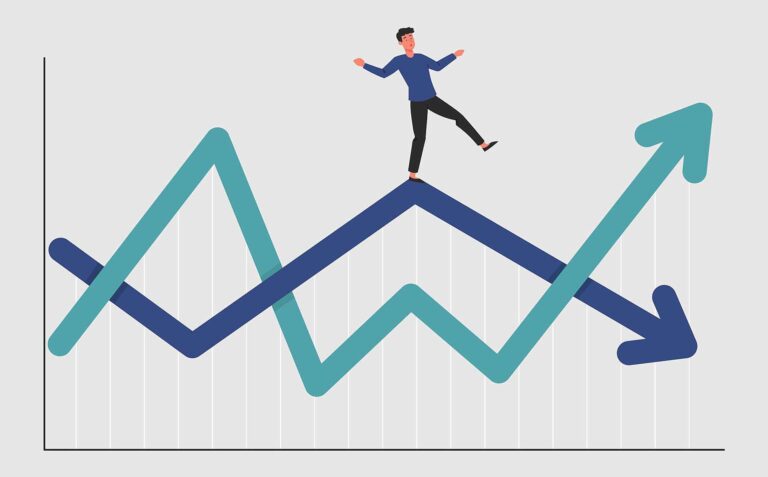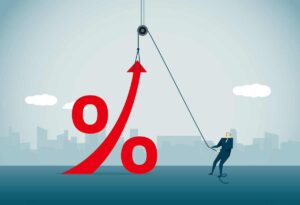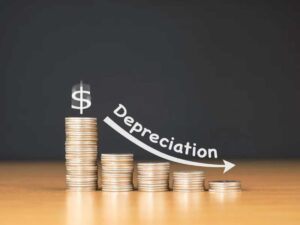Volatility: meaning, types, importance and more

Price fluctuations are highly common occurrence in the business world. This article aims to provide a comprehensive understanding of volatility and its various types, including historical volatility, implied volatility, and market volatility. Additionally, the article will explore the factors that affect volatility and its importance in investment decision-making.
What is volatility?
Volatility is a term used to describe the degree of variation in the price or value of an asset over time. It is a measure of the uncertainty or risk associated with an investment.
Types of volatility
There are different types of volatility, each with its unique characteristics and applications. These include historical volatility, implied volatility, and market volatility.
1. Historical volatility
This type of volatility measures the past variation in the price or value of an asset over a specific period, typically a year or more. Historical volatility is calculated using standard deviation, a statistical measure that indicates the extent to which the asset’s price or value deviates from its average value over time.
Historical volatility is useful in predicting the asset’s future price movements based on its past performance.
2. Implied volatility
This type of volatility measures the market’s expectation of future price movements in an asset. Implied volatility is derived from options pricing, where options traders use the Black-Scholes model to determine the fair value of an option based on factors such as the asset’s price, strike price, time to expiration, and risk-free interest rate. Implied volatility is an essential tool for options traders as it helps them determine whether an option is overpriced or underpriced.
3. Market volatility
This type of volatility measures the overall volatility of the market or a particular index. Market volatility is often represented by indices such as the VIX index, which measures the implied volatility of S&P 500 index options.
High market volatility indicates that investors are uncertain about the market’s future direction, leading to increased buying and selling pressure.
Factors affecting volatility
Several factors influence volatility, including economic, political, and market conditions.
- Economic conditions: Economic conditions such as inflation, interest rates, and economic growth can significantly affect an asset’s volatility. For instance, high inflation may lead to increased volatility in the currency markets, while a low-interest-rate environment may lead to increased volatility in the bond markets.
- Political conditions: Political instability can lead to increased volatility in the financial markets. For instance, political events such as elections, policy changes, and geopolitical tensions can significantly affect an asset’s value and increase volatility. Additionally, government regulations and policy changes can also affect an asset’s volatility.
- Market conditions: Market conditions such as supply and demand, market sentiment, and liquidity can also influence an asset’s volatility. For instance, a sudden increase in demand for a particular asset may lead to increased volatility as buyers and sellers adjust their positions. Additionally, changes in market sentiment, such as fear or greed, can lead to increased volatility.
Importance of volatility in investment decision-making
Volatility plays a crucial role in investment decision-making. Understanding volatility can help investors identify opportunities for profit and manage risk effectively. Some of the ways volatility is important in investment decision-making include:
- Asset allocation: Volatility can help investors determine the appropriate allocation of assets in their portfolio. Generally, high-risk assets have high volatility, and low-risk assets have low volatility. By assessing the volatility of different asset classes, investors can determine the appropriate allocation of assets based on their risk tolerance and investment goals.
- Risk management: Volatility is a measure of risk. High-volatility assets are riskier than low-volatility assets. By understanding volatility, investors can identify high-risk investments and implement risk management strategies such as diversification, hedging, and stop-loss orders to protect their investments.
- Investment strategy: Volatility can help investors determine their investment strategy. For instance, investors with a high-risk tolerance may invest in high-volatility assets such as stocks, while investors with a low-risk tolerance may invest in low-volatility assets such as bonds. Additionally, understanding volatility can help investors determine when to buy or sell an asset based on its expected future price movements
Techniques for measuring volatility
There are several techniques for measuring volatility, including:
- Standard deviation: Standard deviation is a statistical measure that indicates the extent to which an asset’s price or value deviates from its average value over time. Historical volatility is calculated using standard deviation, making it a useful tool for predicting an asset’s future price movements.
- Beta: Beta measures an asset’s sensitivity to market volatility. Beta compares an asset’s price movements to those of the market, indicating whether the asset is more or less volatile than the market. A beta of one indicates that the asset’s price movements are as volatile as the market, while a beta greater than one indicates that the asset is more volatile than the market.
- VIX Index: The VIX index measures the implied volatility of S&P 500 index options, indicating the market’s expectation of future price movements in the S&P 500 index. The VIX index is often used as a measure of overall market volatility.
Managing volatility
Volatility trading strategies aim to profit from changes in an asset’s volatility. Some of the commonly used volatility trading strategies include:
- Long/Short: In a long/short strategy, an investor simultaneously buys a low-volatility asset and sells a high-volatility asset. The idea is to profit from the difference in the two assets’ volatility. If the low-volatility asset’s value increases, and the high-volatility asset’s value decreases, the investor can earn a profit.
- Straddle: In a straddle strategy, an investor simultaneously buys a call option and a put option on the same asset with the same strike price and expiration date. The idea is to profit from a significant price movement in either direction.
- Strangle: In a strangle strategy, an investor simultaneously buys a call option and a put option on the same asset with different strike prices but the same expiration date. The idea is to profit from a significant price movement in either direction while minimizing the cost of the options.
Volatility trading strategies can be complex, and investors should thoroughly research and understand the strategies’ risks and potential rewards before implementing them.
Conclusion
Measuring volatility is essential for investors as it helps them make informed investment decisions and manage risk effectively. Techniques for measuring volatility, such as standard deviation, beta, and the VIX index, provide investors with valuable information about an asset’s risk and potential returns.
By understanding volatility and applying appropriate risk management strategies, investors can maximize their returns while minimizing their risk exposure.
Is volatility a good thing? For long-term traders, volatility can be seen as a bad thing that can reduce profits. Nonetheless, to option or day traders, volatility would be seen as a gain for profits.
Don't miss a thing. Follow us on Telegram and Follow us on WhatsApp. If you love videos then also Subscribe to our YouTube Channel. We are on Twitter as MakeMoneyDotNG.





